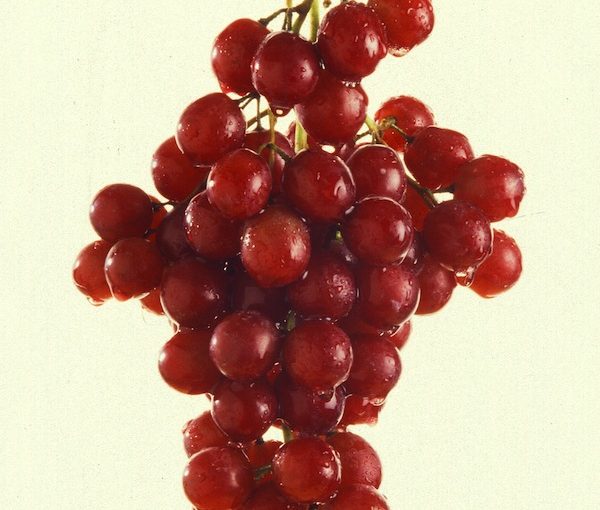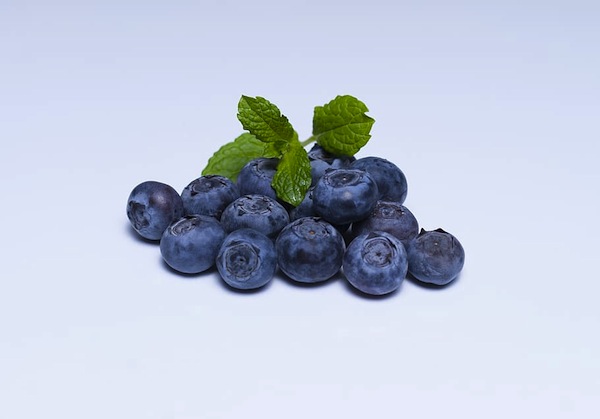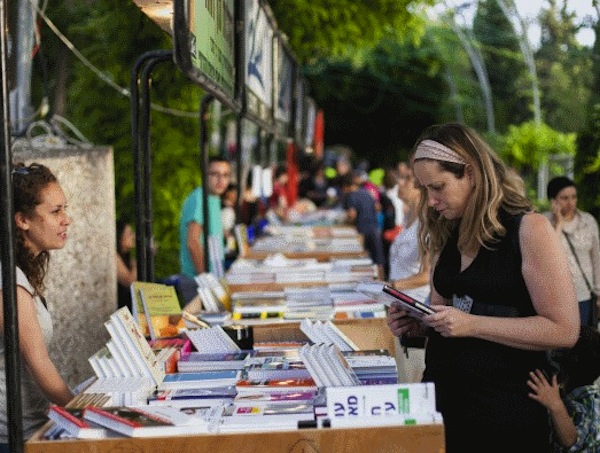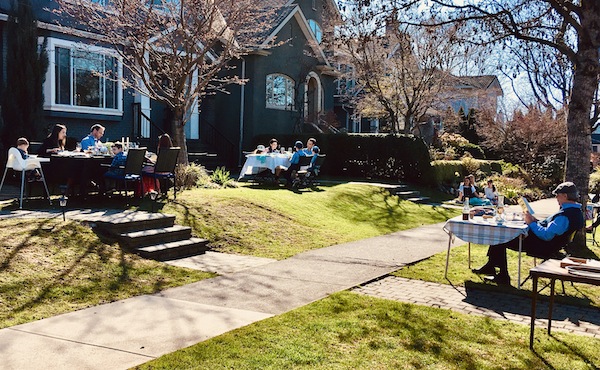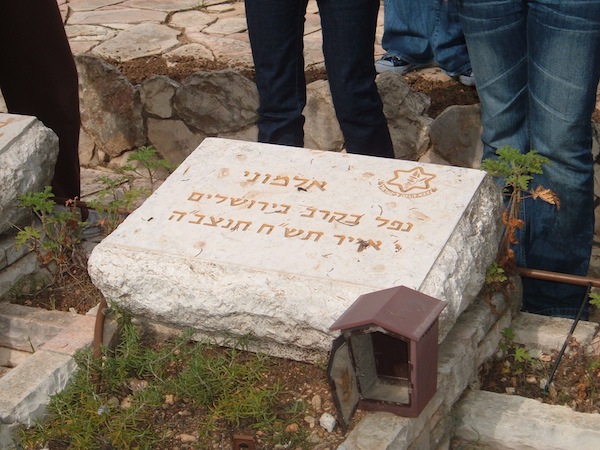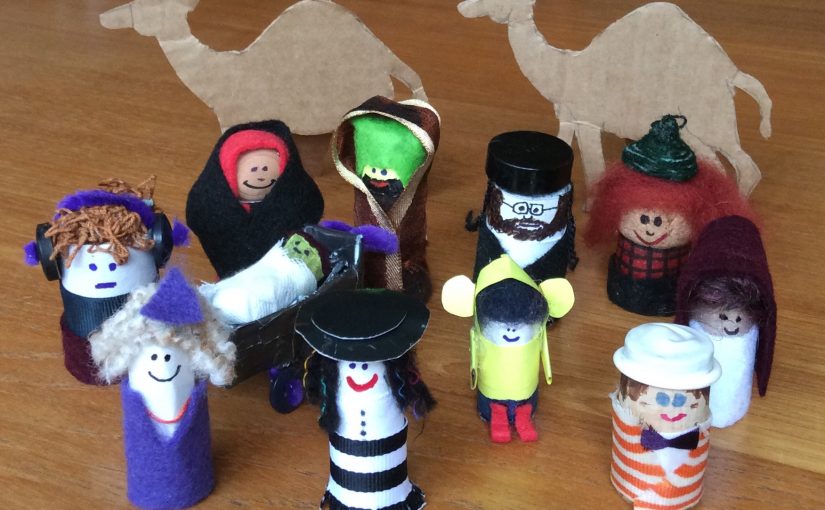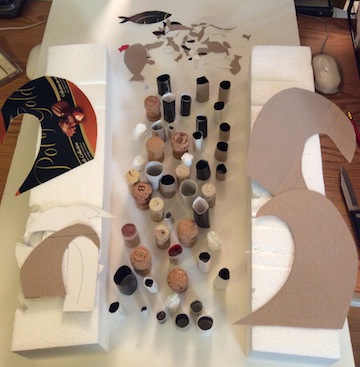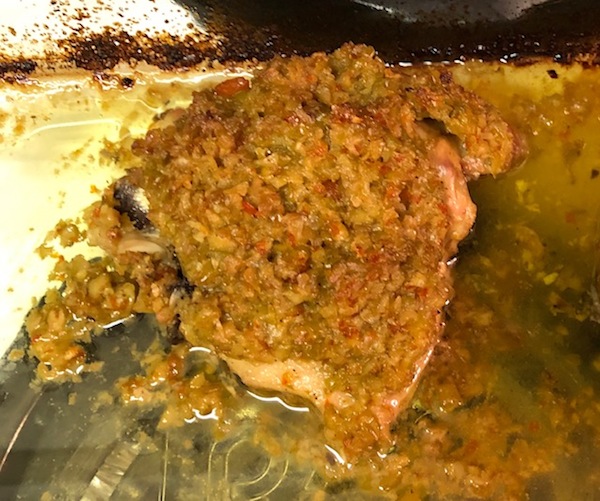(photo from commons.wikimedia.org)
Most of us are familiar with the spies who were dispatched by Moses to “spy” out the land of Canaan – they cut down a branch with a cluster of grapes on a staff and carried it back. Grapes were part of the summer harvest in ancient Israel. In fact, there was a holiday called Feast of First Fruits and Wine because grapes were the first major crop to ripen. It was not mentioned in the Bible, but in the Dead Sea Scrolls. It was celebrated on the third day of Av (July 24 this year), with Israelites bringing grapes to the Temple. So, here are some grape recipes in case you want to celebrate this little-known holiday.
VINEYARD CHICKEN
(I found this in an Empire Kosher recipe brochure many years ago. It makes eight servings.)
2 4-to-4.5-pound roasting chickens
2 lemons, cut in half
1/4 cup Dijon mustard
4 tsp ground ginger
salt and pepper to taste
2 tsp dry basil
2 tsp your favourite herb
6 peeled, quartered onions
4 cups chicken broth
1 cup orange juice
4 cups seedless red and green grapes
1/4 cup chopped fresh basil or cilantro
- Preheat oven to 425°F.
- Rinse and pat dry chickens. Squeeze half lemon over each chicken. Place two lemon halves inside each chicken.
- Combine Dijon mustard, ginger, salt, pepper and herbs in a bowl to make a paste.
- Rub mixture over each chicken and place rest in each cavity. Put chickens into a large roasting pan. Scatter four onions in the pan. Roast 30 minutes.
- Meantime, combine giblets, neck, two onions, chicken broth and orange juice in a saucepan. Simmer 25 minutes.
- Reduce oven to 375°F. Strain broth and add 1.5 cups to roasting pan. Roast 15 minutes and baste. Repeat three more times. Remove chicken, let rest 15 minutes and cut into serving pieces.
- Remove lemons, return chicken pieces to roasting pan, spoon juices and onions over chicken. Scatter grapes over chicken and add remaining broth. Cover and bake 15 minutes.
- Serve on a large platter with grapes and juices and sauce. Garnish with fresh basil or cilantro.
MIDDLE EASTERN ORANGE BLOSSOM FRUIT BOWL
(six servings; pareve)
1 fresh pineapple, peeled, cored and cut into slices then quarters from each slice
2 large peeled, sectioned oranges
2 cups seedless red or green grapes
1/4 cup orange blossom flower water or orange-flavoured liqueur
1/4 cup slivered almonds
confectioners sugar
cinnamon
mint sprigs
- In a bowl, mix pineapple pieces, orange sections, grapes and orange flower water. Cover and refrigerate two hours.
- Put nuts into a small frying pan. Cook and stir until toasted. Remove to a small bowl.
- Arrange fruits on a large platter. Sprinkle with confectioners sugar, cinnamon and toasted nuts. Garnish with mint sprigs. Serve cold.
GRAPES IN BRANDY
(five to six servings; dairy)
3/4 cup honey
3/8 cup brandy
1 tbsp lemon juice
1 pound seedless red and green grapes, without stems
1 cup sour cream
lemon peel curls
On the day before serving, mix the honey, brandy and lemon juice. Place the grapes in a large bowl and pour the mixture over them. Cover and refrigerate overnight.
The next day, divide the fruit mixture into serving dishes, champagne glasses or any unusual glass. Spoon sour cream on top of each. Garnish with lemon peel curls.
Sybil Kaplan is a journalist, lecturer, book reviewer and food writer in Jerusalem. She created and leads the weekly English-language Shuk Walks in Machane Yehuda, she has compiled and edited nine kosher cookbooks, and is the author of Witness to History: Ten Years as a Woman Journalist in Israel.

